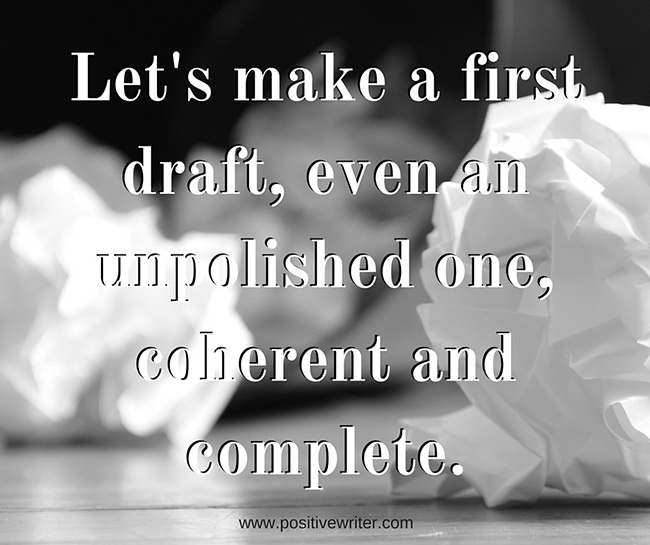The Internet seems to be of two general thought schools on the subject of first drafts.
They go like this:
One: The first draft is your brain-barf, pure, unadulterated word puke, a memory dump, Michelangelo’s block of marble. The writer’s job in the first drafting process is to get as much of it down on paper as humanly possible; it’s for second drafts and beyond to chip away at the mess left behind.
Two: Word-spew is for amateurs. Efficient writers who want to write real books and make money to write more books will plot out their drafts, making Excel spreadsheets full of color-coded scene lists, arranged by character and codified by act. First drafts are the upwellings of all this hard pre-work, and are polished, precise, and require minimal rework before being shipped to your agent or CreateSpace, whichever you prefer.
Can I offer a third way? I’ve nicknamed it the “Four D’s” – four elements that help make a first draft, even an unpolished one, coherent and complete.

Dilemma
The plot of your first draft must be defined by its biggest, most distinctive elements – its conflicts. Before you leap into your first draft, take an hour or two and sketch a quick list of the major conflicts in your story, and should include:
- The inciting incident (that gets your characters moving in the beginning)
- Act I’s conflict that sets up your protagnist’s quest, change arc, undoing or rebirth
- Act II conflict(s) in which your characters strive for what they want, and fail or are rebuffed
- Act III’s rising climax and final showdown (often a sequence of two or three intertwined conflicts)
Duos
By duos I mean the brief appearance of at least two, but ideally even more, of your main characters. This can be as simple as your pro- and antagonist, but for the most successful first draft, I would suggest not only that pair, but at least two of your most significant supporting characters, as well. In your first draft, sketch out at least one characterization scene for each, that lays out their main goal, their main obstacle, and their own, personal voice.
Thinking of your characters carefully during the first draft helps prevent that I’m-definitely-creating-cardboard-people feeling that can plague later drafts.
Dynamics
Dynamics, the rising and falling of action, are a critical aspect of plot, most particularly in the middle of your novel where, as you maneuver your characters from Point A to Point Z, you may get mired in plot muck.
The cure for mushy middles is a steady authorial hand that not only moves the plot inexorably forward, but steadily builds tension by raising the stakes again and again. Your character is fighting for the survival of their village? Up the ante and kidnap her mother. Your protagonist is getting snared in ever-more-complex plot devices as he makes his way slowly toward his goal (is that you, Frodo?) – bring down one of his tentpoles, like his house, or his dog, or something vitally important to him, and clear the air of over-complexity before you move to Act III.
Doom
I can’t ever say enough good things about doom. Good old impending doom is one of those magic little devices that helps hook your readers, and keep the pages turning. Through your first draft, deliberately drop in those little hints, those atmospheric asides, that let the reader know that your story is careering closer and closer to the edge of that cliff. Even if all you can do is give your character a premonition, trigger a memory, or gather cumulonimbus clouds on a deceptively sunny day, keep the doom faucet on a steady trickle.
Until you turn it on full blast, of course.
How do you create a first draft and where do you stand on the infamous plotter-versus-pantser debate? Share in the comments.
This post is by Positive Writer contributor Shanan Haislip.
